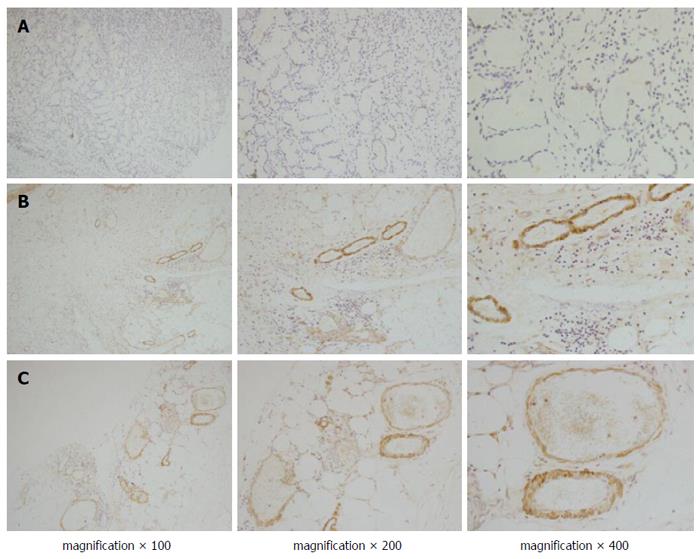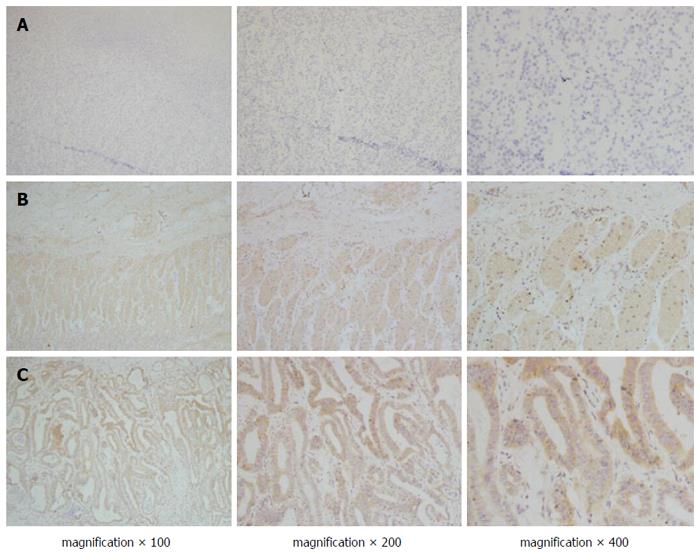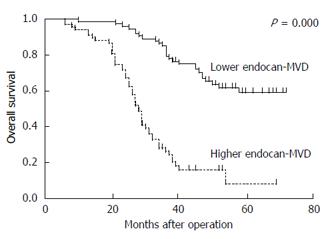Copyright
©The Author(s) 2016.
World J Gastroenterol. Jun 21, 2016; 22(23): 5422-5429
Published online Jun 21, 2016. doi: 10.3748/wjg.v22.i23.5422
Published online Jun 21, 2016. doi: 10.3748/wjg.v22.i23.5422
Figure 1 Immunohistochemical staining of endocan in gastric cancer.
Positive staining of endocan was observed in most of the endothelial cells of the tumour vessels, but less staining was observed in normal gastric tissues (A); In the peritumour vascular endothelium (B); positive endocan was more compact than that in the tumour centres (C).
Figure 2 Immunohistochemical staining of vascular endothelial growth factor and vascular endothelial growth factor receptor 2 in gastric cancer.
Positive staining of VEGF (B) and VEGFR2 (C) was observed in most gastric cancer tissues, but less staining was observed in normal gastric tissues (A). VEGF: Vascular endothelial growth factor; VEGFR2: VEGF receptor 2.
Figure 3 Overall survival curves of the patients in the high and low endocan-microvessel density groups.
Patients with high endocan-MVD had a significantly poorer overall survival rate than those with low endocan-MVD (17.9% vs 64.0%, P = 0.000). MVD: Microvessel density.
- Citation: Chang Y, Niu W, Lian PL, Wang XQ, Meng ZX, Liu Y, Zhao R. Endocan-expressing microvessel density as a prognostic factor for survival in human gastric cancer. World J Gastroenterol 2016; 22(23): 5422-5429
- URL: https://www.wjgnet.com/1007-9327/full/v22/i23/5422.htm
- DOI: https://dx.doi.org/10.3748/wjg.v22.i23.5422















